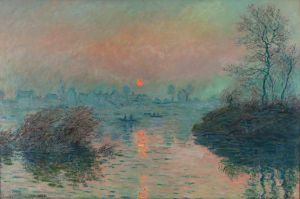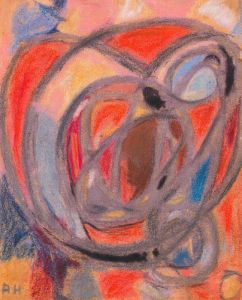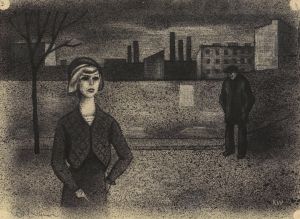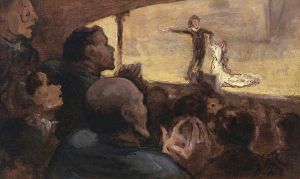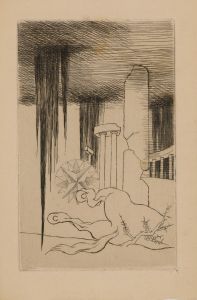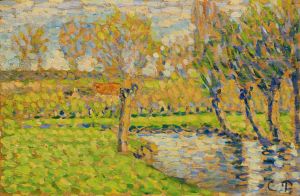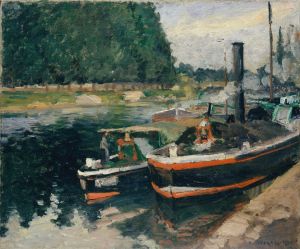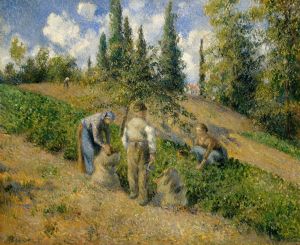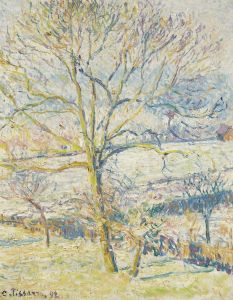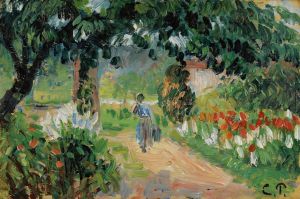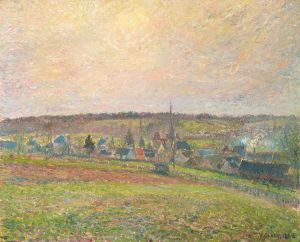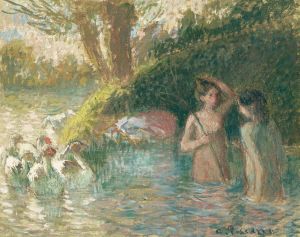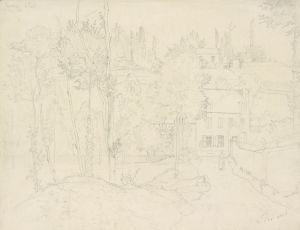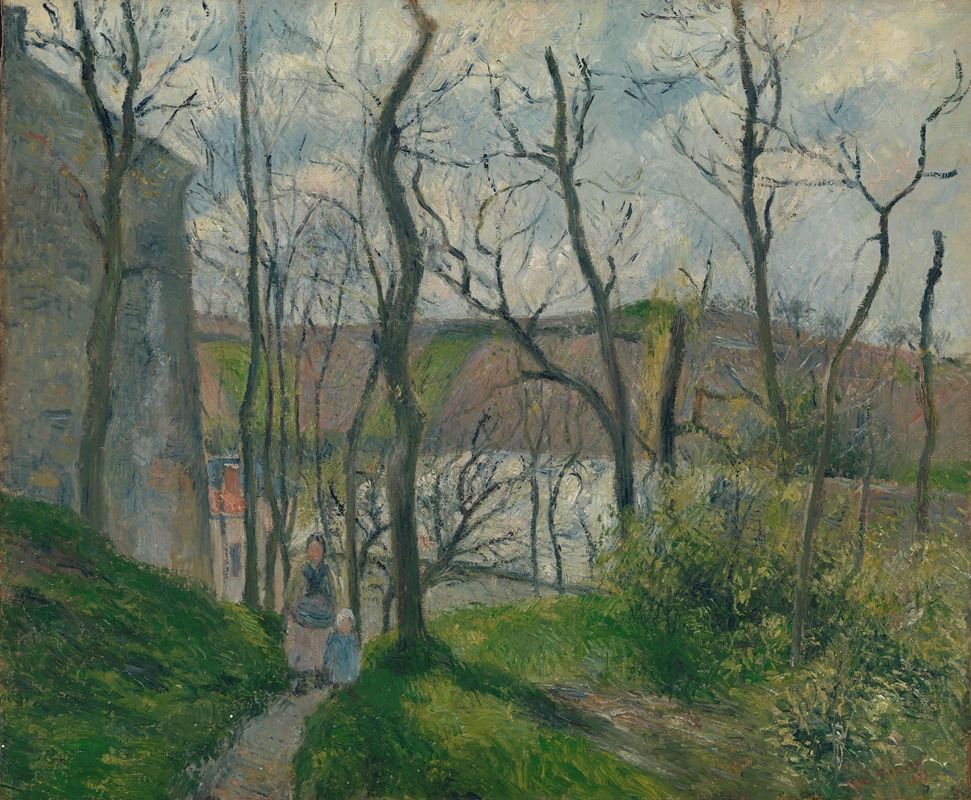
The ‘Royal Palace’ at the Hermitage, Pontoise
A hand-painted replica of Camille Pissarro’s masterpiece The ‘Royal Palace’ at the Hermitage, Pontoise, meticulously crafted by professional artists to capture the true essence of the original. Each piece is created with museum-quality canvas and rare mineral pigments, carefully painted by experienced artists with delicate brushstrokes and rich, layered colors to perfectly recreate the texture of the original artwork. Unlike machine-printed reproductions, this hand-painted version brings the painting to life, infused with the artist’s emotions and skill in every stroke. Whether for personal collection or home decoration, it instantly elevates the artistic atmosphere of any space.
Camille Pissarro, a pivotal figure in the Impressionist movement, painted "The ‘Royal Palace’ at the Hermitage, Pontoise" in 1867. This work is a testament to Pissarro's dedication to capturing the essence of rural and suburban life in France during the late 19th century. Pissarro, born in 1830 on the island of St. Thomas, moved to France in 1855, where he became a central figure in the Impressionist circle, known for his landscapes and scenes of everyday life.
"The ‘Royal Palace’ at the Hermitage, Pontoise" is one of Pissarro's many paintings that depict the area around Pontoise, a town northwest of Paris. Pissarro moved to Pontoise in the 1860s, where he found inspiration in the rural landscapes and the interplay of light and shadow. This painting reflects his interest in capturing the changing effects of light and atmosphere, a hallmark of the Impressionist style.
In this painting, Pissarro employs a palette of muted earth tones, which was characteristic of his work during this period. The composition is carefully structured, with a focus on the natural environment and the architecture of the region. The painting does not depict an actual royal palace; rather, the title may refer to a local landmark or a colloquial name for a building in the area. Pissarro's choice of subject matter reflects his interest in the everyday and the ordinary, elevating these scenes through his artistic vision.
Pissarro's technique in this painting involves loose brushwork and an emphasis on capturing the transient effects of light. This approach was innovative at the time and contributed to the development of Impressionism. By focusing on the natural landscape and the built environment, Pissarro invites viewers to appreciate the beauty in the mundane and the overlooked.
Throughout his career, Pissarro was known for his commitment to working outdoors, or "en plein air," which allowed him to observe and depict the natural world with immediacy and authenticity. This method is evident in "The ‘Royal Palace’ at the Hermitage, Pontoise," where the play of light and shadow suggests a specific time of day and atmospheric conditions.
Pissarro's work in Pontoise was influential in the development of his style and in the broader Impressionist movement. His paintings from this period often feature a harmonious blend of natural and man-made elements, reflecting his belief in the interconnectedness of humanity and nature. "The ‘Royal Palace’ at the Hermitage, Pontoise" exemplifies this approach, capturing a moment in time with sensitivity and precision.
Today, Camille Pissarro is celebrated as one of the founding figures of Impressionism, and his works continue to be studied and admired for their innovative techniques and their ability to convey the beauty of everyday life. "The ‘Royal Palace’ at the Hermitage, Pontoise" remains an important piece within his oeuvre, illustrating his mastery of landscape painting and his contribution to the evolution of modern art.





